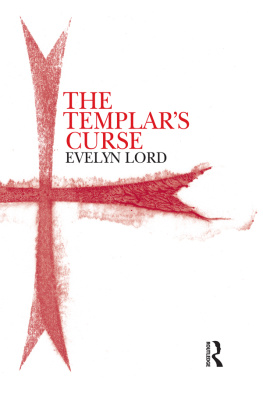THE HOSPITALLERS
CHAP. I.
The natural desire to visit places which have been the scene of memorable actions, or the abode of distinguished personages, had from a very early period drawn pious pilgrims from the east and the west to view those spots which had been hallowed by the presence of the Son of God. The toils and the dangers of the journey were unheeded, when set in comparison with the bliss of pouring forth prayer on Calvary, and bathing in the waves of Jordan, whose waters had consecrated the Saviour to his holy office. And, accordingly, we find that, so early as the ninth century, there was in the valley of Jehoshaphat, near the church of the Holy Virgin, an Hospital composed of twelve dwellings, for pilgrims from the west, which possessed corn lands, vineyards, and gardens, and an excellent library, established by the bounty of Charlemagne.
In the eleventh century, when the apprehension of the approaching end of the world, and appearance of Christ to judge mankind, had once more fanned the flame of pious pilgrimage which had been previously dying away, and men were hastening to the land where they expected to meet their Lord and Judge, there was built within the walls of Jerusalem an Hospital for the reception of Catholic pilgrims. This hospital stood within a very short distance of the church of the Holy Sepulchre, and, by the favour of the Egyptian Khalif, a church, dedicated to the Virgin, and afterwards called St. Maria de Latina, was erected close by it; there an abbot and several monks, who followed the rule of St. Benedict, received and entertained the pilgrims who arrived each year from the west, and furnished such of them as were poor or had been plundered by the roving Bedouins, with the means of paying the tax exacted by the unbelievers. Decorum not permitting the reception of female pilgrims, the brethren established without their walls a convent, dedicated to Mary Magdalene, where a pious sisterhood entertained the pilgrims of their own sex. The number of the pilgrims still continuing to increase, the abbot and his monks erected a new Hospitium near their church, which they placed under the patronage of St. John, the Patriarch of Alexandria, named Eleemon, or the Compassionate. This last Hospital had no independent revenues, but derived its income from the bounty of the abbot of the monastery of the Holy Virgin, and the alms of the pious.
When, in 1099, Jerusalem was invested by the Crusaders, the Hospital of St. John was presided over by Gerhard, a native of Provence, a man of exemplary piety, and of a spirit of mild and universal benevolence, rarely to be found in that age; for while the city was pressed by the arms of the faithful, who sought for future glory by the extermination of those whom they deemed the enemies of God on earth, not merely the orthodox Catholic, but the schismatic Greek, and even the unbelieving Moslem, shared without distinction the alms of the good director of the Hospital of St. John. When the city was taken, the sick and wounded of the Crusaders received all due care and attention from Gerhard and his monks. The general favour they enjoyed with Godfrey de Bouillon and the other pilgrims now emboldened them to separate themselves from the monastery of St. Mary de Latina; and to pursue their labour of love alone and independent, they drew up a rule for themselves, to which they bound themselves to obedience in the presence of the patriarch, and assumed as their distinguishing dress, a black mantle, with a white cross of eight points on the left breast. They still remained obedient to the abbot of St. Maria de Latina, and according to the law of the church, they paid tythes to the patriarch.
This continued while the brotherhood was poor; but riches soon began to flow in upon them. Godfrey, whose very name suggests the ideas of virtue and piety, pure, if not always well-directed, struck with their simple and unassuming charity, bestowed on them his domain of Monboire, in Brabant, with all its appurtenances. His brother and successor, Baldwin, gave them a portion of the booty gained from the infidels; several pious princes and nobles followed these examples, and the Hospital of St. John soon saw itself in possession of extensive estates, both in Europe and Asia, which were managed by members of the society named Preceptors. Pope Pascall II, in 1113, relieved the Hospitallers from the burden of paying tythes to the patriarch of Jerusalemconfirmed by his Bull all donations made and to be made to themand gave them authority to appoint a successor on the death of Gerhard, without the interference of any other secular or spiritual authority. The society now counted among its members many gallant knights who had come to the Holy Land to fight in the cause of their Saviour; and there, actuated by a spirit more accordant to his, had flung aside their swords, and devoted themselves to the attendance on the sick and poor among the brethren of St. John. One of the most distinguished of these was Raymond Dupuy, a knight of Dauphin, who, on the death of the worthy Gerhard, was chosen to succeed him in his office.
It was Raymond who organized the order of the Hospitallers, and established the discipline of the order. His regulations afford a specimen of the manners and modes of thinking of his time; and some of them require to be noticed here, on account of their similarity with those of the Templars, shortly to be mentioned. The usual monkish duties of chastity and obedience were strictly enjoined; the brethren, both lay and spiritual, were directed to wear at least a linen or woollen shirt, but no expensive dress of any kind; above all, no furs; when they went to collect alms, they were, for fear of temptation, never to go alone, but always in parties of two or three; they were not, however, to select their companions, but to take such as the director should appoint them; wherever there was a house belonging to their order, they were to turn in thither, and nowhere else, and to take whatever was given them, and ask for nothing more; they were also to carry their lights with them, and wherever they passed the night, to set these burning before them, lest the enemy should bring on them some deadly danger. When the brethren were in the church, or in a private house, in the company of women, they were to take good heed to themselves and avoid temptation; for the same reason, they were never to suffer women to wash their head or feet, or to make their bed. If a brother had fallen into carnal sin, and his offence was secret, a silent penance was deemed sufficient; but if it had been public, and he was fully convicted of it, he was on Sunday, after mass, when the people were gone out of church, to be stript of his clothes, and there, by the director himself, or such of the brethren as he appointed, severely beaten with thongs or rods, and then expelled the order. Any brother possessed of money or valuables, who concealed them from the master, was severely punished, the money which he had secreted was hung about the offenders neck, and he was scourged by one of the brethren, in the presence of all those belonging to the house; he had then to do penance for forty days, during which time, on Wednesdays and Fridays, he had nothing but bread and water to support him. These regulations were made by Raymond, in the year 1118; a circumstance to be attended to, as some similar rules have been since made a ground of accusation against the Templars.











